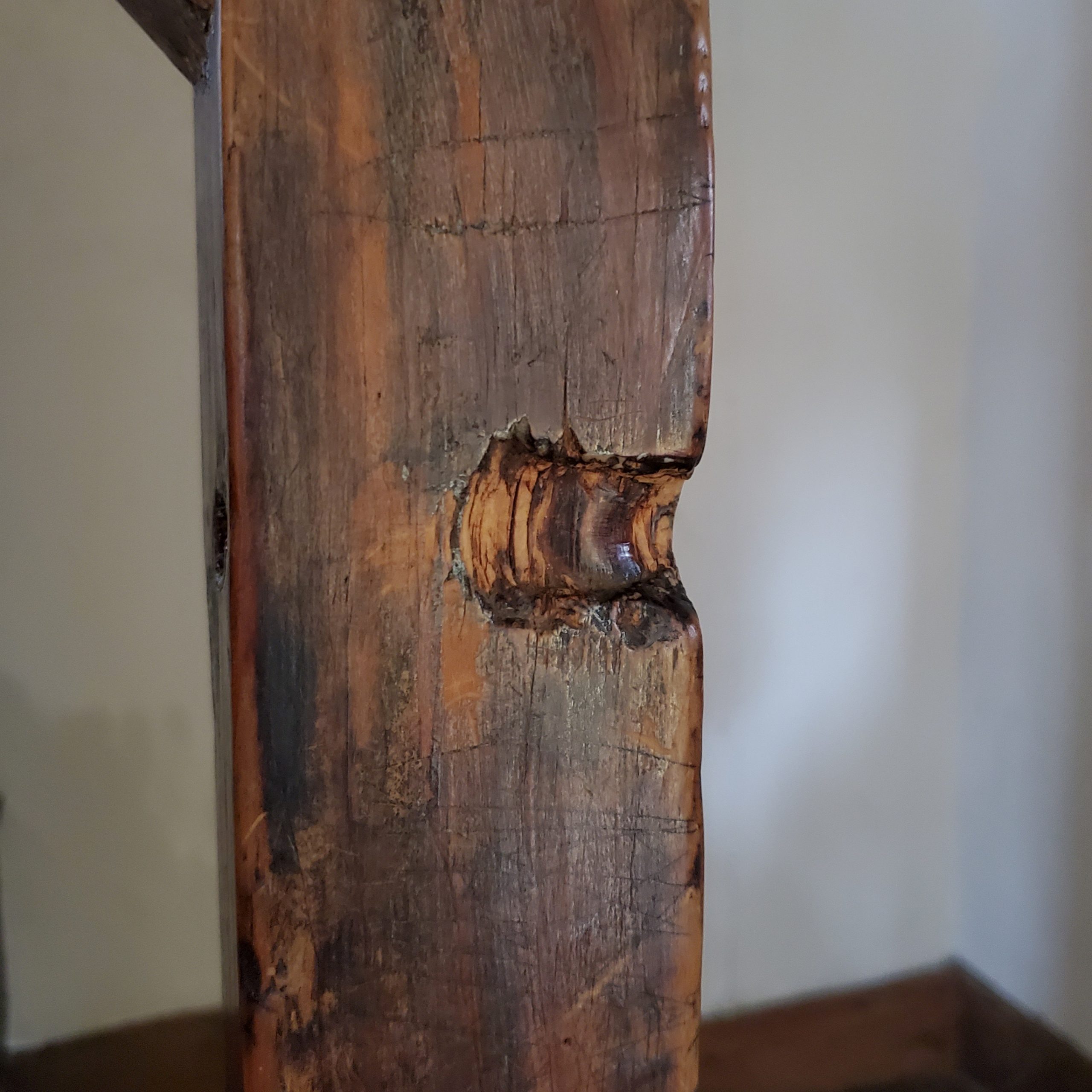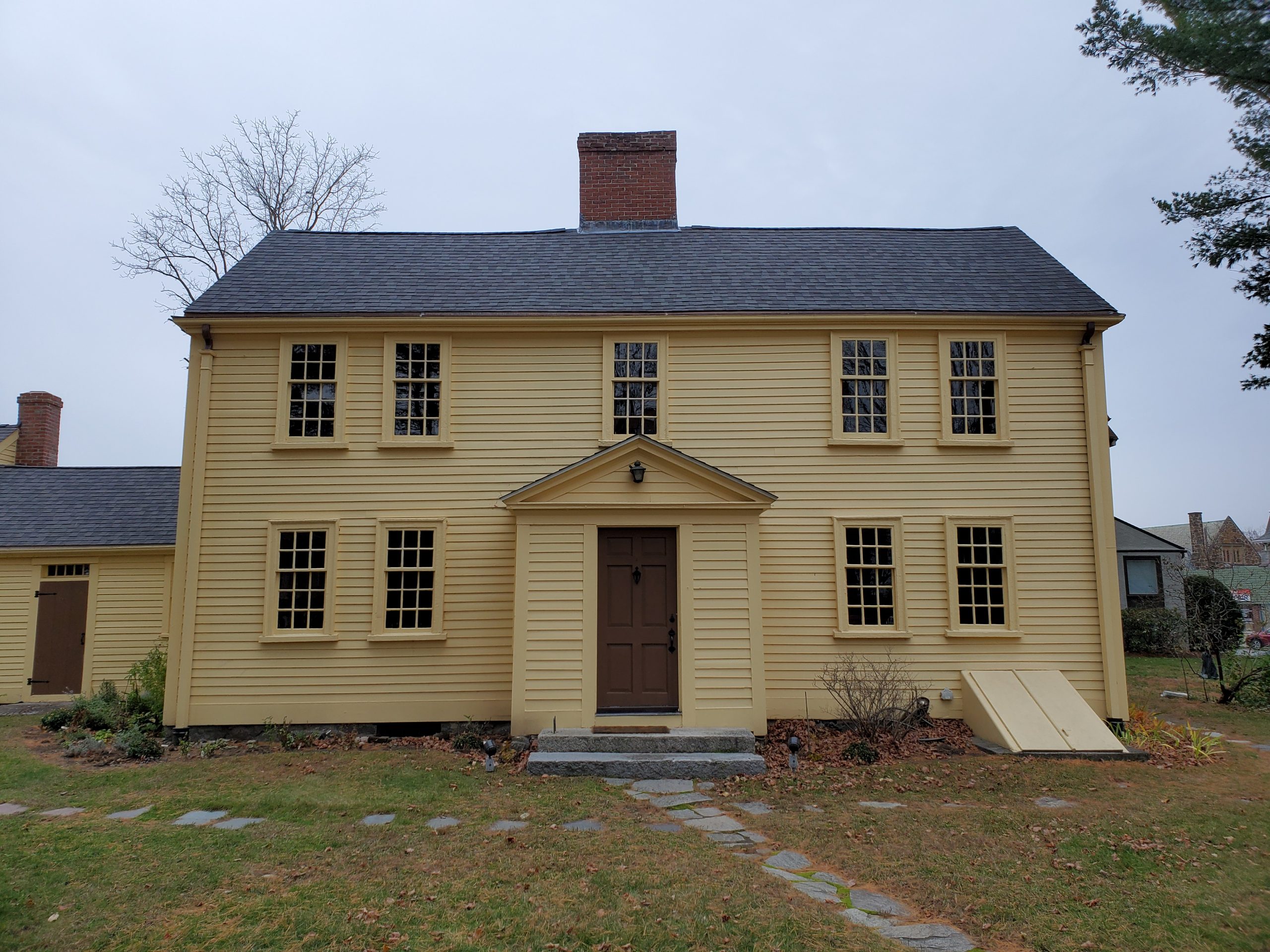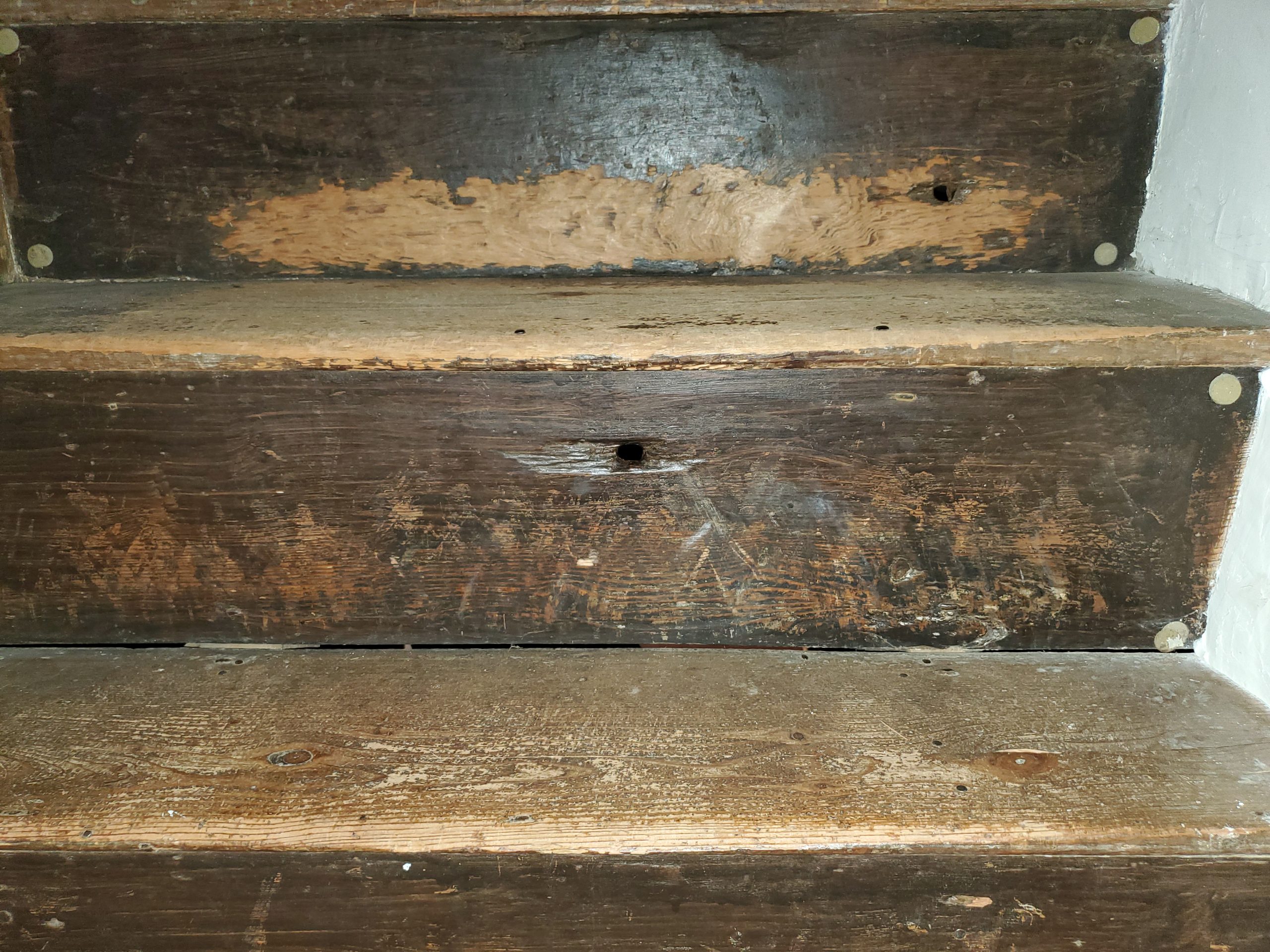A few weeks ago I wrote an article entitled “Learning About Antique Firearms” which was based on our live-fire study of antique arms from the Revolutionary War-era. There is another interesting way that I have been studying about early arms, through the damage they leave behind.
The Jason Russell House in Arlington, Massachusetts was the scene of some of the heaviest fighting on April 19, 1775 during the British retreat from Concord. Twelve Provincials were killed in and around the house and it is unknown how many British might have perished there. As a kid I would walk through the house fascinated by the holes that were purportedly left by musket balls from that famous day.
In January 2020, I assembled a team of historians and archaeologists to come and study the house. We recorded each strike using ballistics rods and lasers, as well as presumptive lead tests to see if any residue from the musket ball might remain. As we followed each hole we found many more than were known before this visit and it enabled us to start to put together the story of what was happening inside as well as outside the house.
By reading the first-person accounts of what was happening during the retreat, British soldiers were shooting at the windows of every house along the road hoping to dissuade Provincials from firing at them. We found many instances of this on every level of the house. The British Pattern muskets of the day had a .75 caliber bore and fired a .69 caliber ball to adjust for the size of the cartridge paper as well as black powder fouling. Using calipers to check the size of each hole we were able to determine where British soldiers were standing outside as they fired at the house. A clean, round hole indicated the entrance of the bullet, while the blown-out wood surrounding the hole was the exit. We knew that a determined group of militia/minute men hid in the cellar as they had no other escape. British soldiers fired from the kitchen through the door into the cellar, but their shot was high and after hitting the cellar door went through the stair risers and lodged in the upstairs stairway wall. One shot came through the window, went through the wall paneling, and struck the newel post to the stairway.
Another part of the study was given to us as a pro bono project by Feldman Surveyors. They did 3-D laser scanning of the interior and exterior of the house. This will enable us to be able to have a virtual walk-through of the house and add in the bullet strikes. Next week, GPR, or Ground Penetrating Radar will be done on the yard as a part of the study, and the last part of the project will be a live fire study replicating the data by firing at mock up house panels.
For me, collecting isn’t just about owning an object it is also a huge learning experience that helps bring a better understanding of not just the arms that were shot, but the individuals who fought and the history of the event. For more information, check out the blog on the Arlington Historical Society website https://arlingtonhistorical.org/ongoing-studies-at-the-jason-russell-house/#comments







